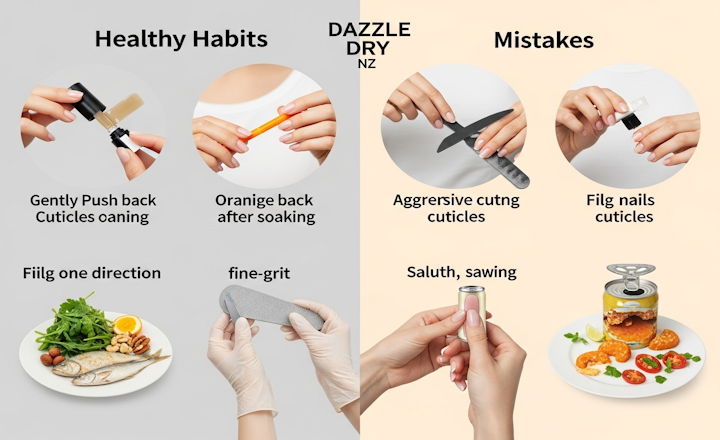
Strong, healthy nails are more than just a finishing touch to your look—they’re also a reflection of your overall nail care habits. Unfortunately, many of us unknowingly make mistakes that leave our nails weak, brittle, or prone to breakage. The good news is that with a few simple adjustments, you can strengthen your nails and keep them looking their best. Brands like Dazzle Dry NZ also make it easier to maintain nail health with products that are designed to be both long-lasting and nail-friendly.
Let’s take a closer look at some of the most common nail mistakes and what you can do to avoid them.
Skipping a Base Coat
It may seem like an unnecessary step, but a base coat does more than just prep the nail for colour. It creates a protective barrier, preventing stains from pigmented polishes and reducing peeling or chipping. Skipping this step leaves nails vulnerable to damage. How to avoid it: Always apply a quality base coat before polish. This not only strengthens the nail but also extends the life of your manicure.
Overusing Nail Hardeners
Nail hardeners can seem like the perfect fix for weak nails, but overusing them can actually cause brittleness and breakage. Hardeners often make nails too rigid, which means they’re more likely to crack under pressure. How to avoid it: Use strengthening treatments sparingly and opt for nourishing alternatives with hydrating properties. Look for products with vitamins or botanicals that encourage natural resilience.
Filing in a Back-and-Forth Motion
It’s a habit many people fall into, but filing nails in a sawing motion weakens their structure, leading to splits and frays. How to avoid it: Always file in one direction using a fine-grit nail file. This helps keep edges smooth and reduces the risk of breakage.
Ignoring Cuticle Care
Cuticles protect the nail bed from bacteria, but when they’re cut too aggressively or neglected altogether, nails become more vulnerable to infection and damage. How to avoid it: Instead of cutting, gently push back cuticles after softening them in warm water. Apply cuticle oil regularly to keep the area hydrated and healthy.
Using Nails as Tools
Opening cans, scratching off labels, or prying objects with your nails may seem harmless at the time, but these habits cause chips, cracks, and long-term damage. How to avoid it: Always use proper tools for tasks. Think of your nails as jewels, not tools—they should be protected, not put to work.
Overexposure to Water and Chemicals
Frequent contact with water, harsh cleaning products, or even acetone-based removers can strip nails of natural oils, making them brittle and prone to peeling. How to avoid it: Wear gloves when cleaning, and opt for gentle, acetone-free removers. Hydrate your nails afterwards with nourishing oils or creams.
Neglecting Nutrition
What you eat plays a direct role in nail strength. Diets lacking in essential nutrients like biotin, protein, or omega-3s often show up in weak or brittle nails. How to avoid it: Incorporate a balanced diet rich in leafy greens, lean proteins, nuts, and seeds. Consider supplements if needed, but always consult with a healthcare professional first.
Nail breakage is often the result of everyday habits rather than bad luck
By recognising these common mistakes and making small changes, you can enjoy healthier, stronger nails that look beautiful with or without polish. And when you’re ready for a manicure that supports nail wellness while delivering long-lasting results, turning to trusted brands can make all the difference.




